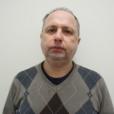

Showing 1221 - 1240 of 1633 results


Role at ANSTO
Sustainability expert joins ANSTO's Innovation Precinct
Dr Anne Hellstedt has been appointed Director of ANSTO’s Innovation Precinct.
Hungarian Ambassador attends ceremony to mark installation of new imaging scanners
The Hungarian Ambassador to Australia and a small delegation visited ANSTO for a special ceremony to mark the installation and commissioning of two new nuclear medicine scanners from the Hungarian company Mediso Pacific.

Spatz - Neutron Reflectometer
A neutron reflectometer for vertical samples.

Elizabeth joined ANSTO at the beginning of 2024 and works as a Research Support Officer for Environment where she is involved in diverse research including ground water sampling and coral provenance.

Role at ANSTO

Stephen received his PhD (Physical Chemistry) from Griffith University in 1996.

Dr Valerie Mitchell is a beamline scientist on the X-ray Absorption Spectroscopy beamline at the Australian Synchrotron.

Role at ANSTO

Role at ANSTO

Role at ANSTO

Role at ANSTO

Beamtime guide - SAXS / WAXS
Beamtime guide on the SAX / WAXS beamline at the Australian Synchrotron.
ANSTO helps verify the origin of traditional Aboriginal products to benefit consumer confidence and Aboriginal enterprises
Tackling international public health issue
ANSTO facilitating coordinated effort to find the nexus that leads to chronic kidney disease of unknown origin
First light achieved for new micro-computed tomography beamline under Project BRIGHT
Project Bright, the construction of eight new beamlines at ANSTO’s Australian Synchrotron has reached a milestone by achieving ‘First Light’ for the new micro-computed tomography (MCT) beamline in late NovembeR.
New beamline provides state-of-the-art imaging capability
The new Micro Computed Tomography (MCT) beamline is the first instrument to become operational as part of the $94 million Project BRIGHT program, which will see the completion of eight new beamlines at ANSTO’s Australian Synchrotron.
Improving the radiation tolerance of microelectronics for space
A team of Melbourne researchers and international partners from Italian Instituto Nazionale de Fisica Nucleare (INFN) and CERN, who are developing radiation-hardened semiconductor chips, used the unique state-of-art high energy ion microprobe on the SIRIUS ion accelerator at ANSTO’s Centre for Accelerator Science to test a prototype radiation-resistant computer chip

Update on building 23 at ANSTO
The Australian Government recently announced $30 million to design a new world-leading nuclear medicine manufacturing facility at ANSTO’s Lucas Heights campus, and replace and an ageing facility.